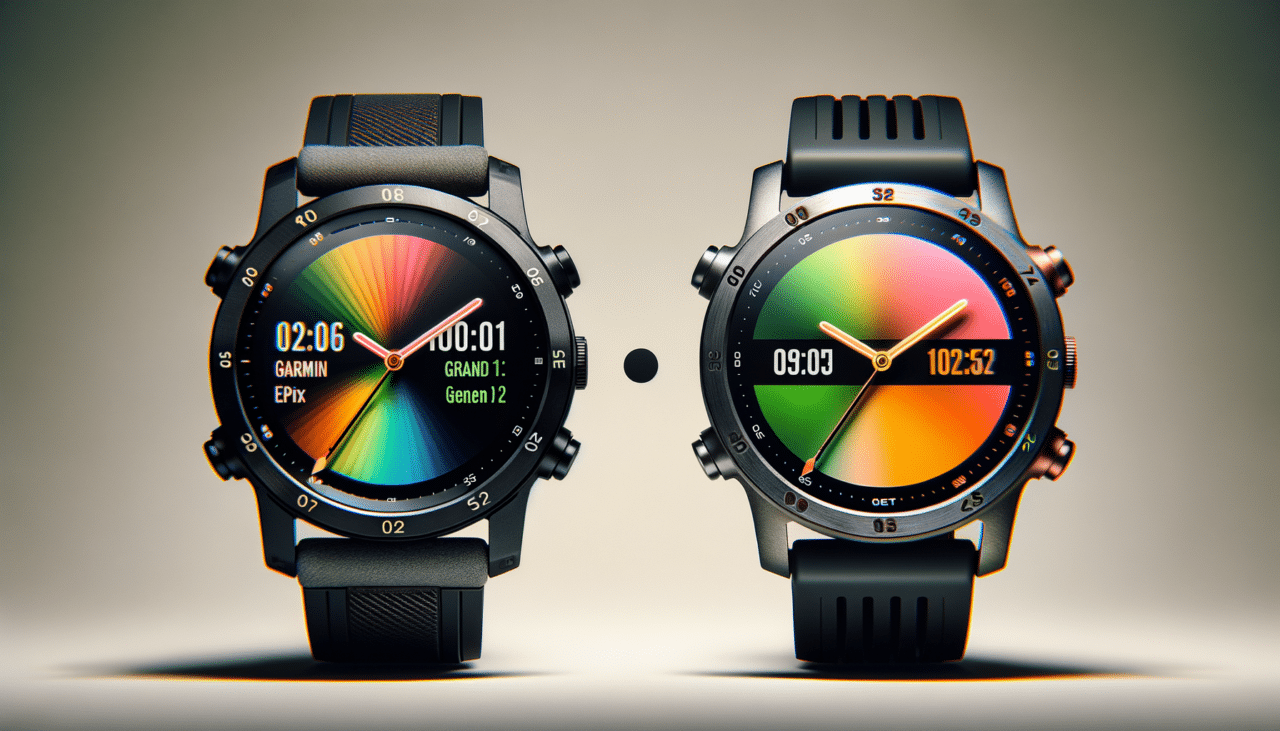In the bustling markets of Cairo where the vibrant hues of spices blend with the rhythmic echoes of the call to prayer, one learns to appreciate the subtle differences that make each stall unique. Much like the bustling markets, the world of wearable technology is a tapestry of intricate designs and functionalities, each vying for the discerning eye of the consumer. Today, we embark on a journey to explore two titans in the realm of AMOLED displays: the Garmin Epix (Gen 2) and the Coros Stride.
As we delve into this comparison, let us set the stage with a table that captures the essence of these two competitors, much like the bustling bazaars of Khan El-Khalili, where each merchant offers a unique story etched in the sands of time.
| Feature | Garmin Epix (Gen 2) | Coros Stride |
|---|---|---|
| Display Technology | AMOLED | AMOLED |
| Display Size | 1.3 inches | 1.2 inches |
| Resolution | 416 x 416 pixels | 390 x 390 pixels |
| Brightness | Up to 1000 nits | Up to 800 nits |
| Touchscreen | Yes | Yes |
| Always-On Display | Yes | Yes |
| Battery Life (Smart) | Up to 16 days | Up to 20 days |
| Weight | 70 grams | 50 grams |
| Water Resistance | 10 ATM | 5 ATM |
| Price Range | $899 – $999 | $499 – $599 |
Garmin Epix (Gen 2): The Nile’s Timeless Glow
The Garmin Epix (Gen 2) is akin to the timeless flow of the Nile, offering a seamless blend of tradition and innovation. Its AMOLED display, at 1.3 inches, is a canvas of clarity, boasting a resolution of 416 x 416 pixels. This ensures that whether you’re navigating the ancient streets of Luxor or the modern alleys of Dubai, every detail is as crisp as the morning call to prayer.
The brightness of the Garmin Epix (Gen 2) can reach up to 1000 nits, akin to the blazing midday sun reflecting off the golden sands of Giza. This ensures visibility even in the brightest conditions, a testament to its design rooted in understanding the needs of adventurers.
Beyond its display, the Garmin Epix (Gen 2) is water-resistant up to 10 ATM, ready to brave the depths of the Red Sea. However, this prowess comes with a slightly heavier frame, weighing 70 grams, much like the sturdy feluccas navigating the Nile’s waters.
Coros Stride: The Desert’s Silent Whisper
In contrast, the Coros Stride is reminiscent of the silent whisper of the desert wind, offering a more understated yet equally captivating experience. Its 1.2-inch AMOLED display, with a resolution of 390 x 390 pixels, is a tribute to subtlety, much like the intricate patterns of a Bedouin tapestry.
With a brightness reaching up to 800 nits, the Coros Stride may not rival the sun’s zenith, but it remains a reliable companion under the vast expanse of the starlit desert sky. Its lightweight design, at just 50 grams, mirrors the effortless grace of a desert gazelle.
The Coros Stride promises a lengthy battery life of up to 20 days, an endurance as steadfast as the ancient pyramids. However, its 5 ATM water resistance suggests a preference for the arid landscapes over aquatic adventures.
Conclusion: The Dance of Two Titans
In the grand tapestry of wearable technology, the Garmin Epix (Gen 2) and Coros Stride each weave their own stories. The Epix stands as a beacon of brightness and durability, a companion for those who seek the thrill of both sea and sand. Meanwhile, the Stride offers a quieter elegance, perfect for those who tread the world with a lighter step and a watchful eye on the horizon.
As you ponder your choice, remember the markets of Egypt, where each item tells a story, and each choice reflects a journey. Whether you choose the brilliance of Garmin or the subtlety of Coros, may your path be as colorful and enriching as a walk through the bustling alleys of Khan El-Khalili.

Comments (0)
There are no comments here yet, you can be the first!